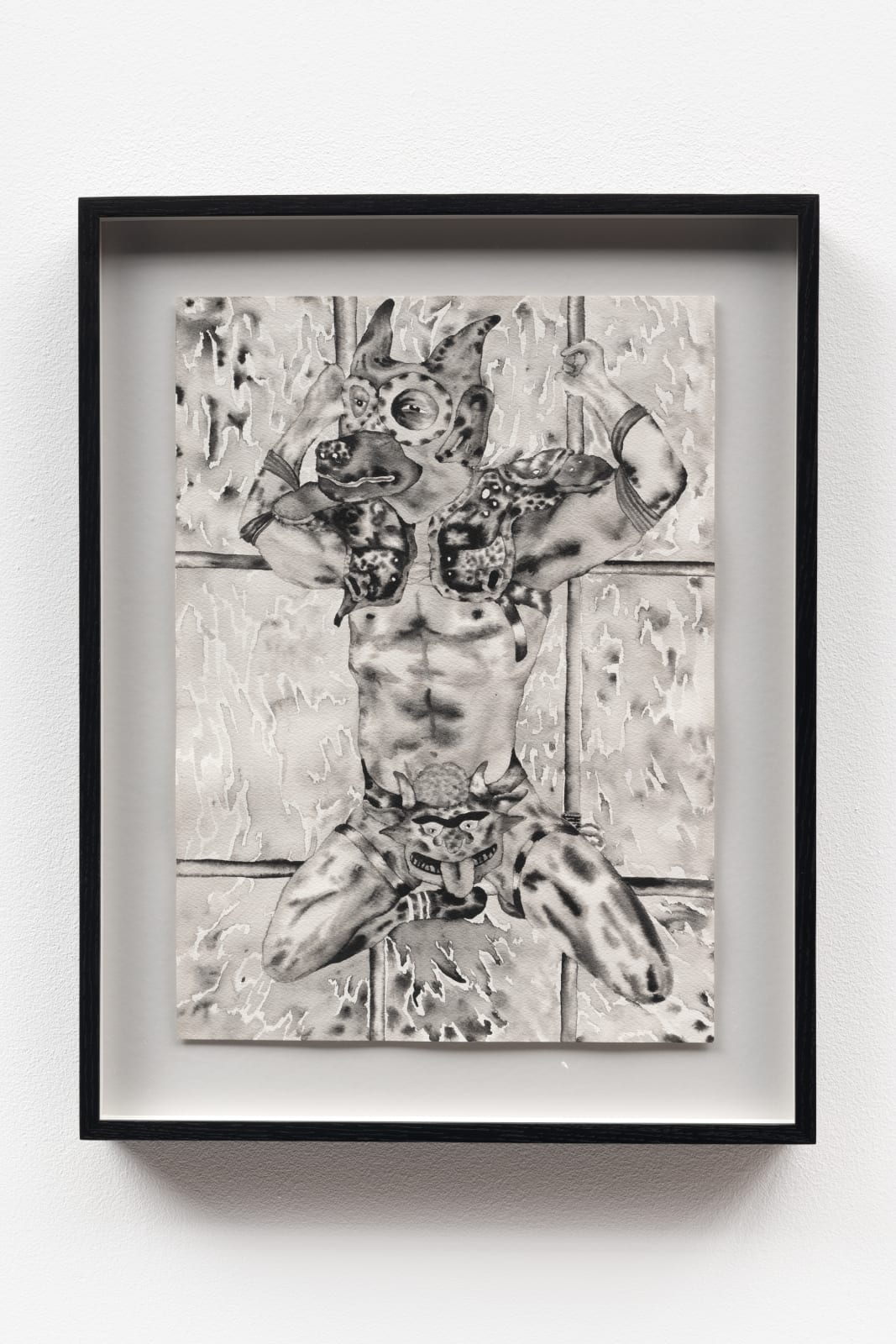
Gray Wielebinski
Iron Wrought, 2022
Ink on paper
36 x 25.9 cm
14 1/8 x 10 1/4 in
Framed: 45.1 x 35.2 x 4 cm
17 3/4 x 13 7/8 x 1 5/8 in
14 1/8 x 10 1/4 in
Framed: 45.1 x 35.2 x 4 cm
17 3/4 x 13 7/8 x 1 5/8 in
In Gray Wielebinski’s (b. 1991 Dallas, TX, USA) expansive practice, they explore the intersections of mythology, identity, gender, nationhood, and memory. In these detailed ink on paper works Wielebinski interrogates...
In Gray Wielebinski’s (b. 1991 Dallas, TX, USA) expansive practice, they explore the intersections of mythology, identity, gender, nationhood, and memory. In these detailed ink on paper works Wielebinski interrogates different forms of power and myth-making, how these are interconnected, and questions how they can be dismantled and redistributed. Reconfiguring and transforming iconography and visual codes, their work seeks to navigate and question society’s frameworks and belief systems. Depicting restrained figures in athletic wear, Wielebinski redefines these sportsman's bodies. Sports provide a rich area of exploration for Wielebinski, who uses sport for both the aesthetic and as an entry point to discuss gender, surveillance, desire, race, national identity, the body, celebrity, costume, and power dynamics.
Visuals in the work are drawn from medieval shame masks – a type of embarrassing punishment device used during the middle ages. They were often made in the shape of animals; a donkey would signify foolishness and a pig nose would indicate the person was dirty. Wolf head masks of shame would be used on those whose language was vulgar or abusive. The aim of the shame masks was to punish and ridicule the offender in order to control behaviour. Directly challenging our obsession with ‘reading’ bodies — they combine symbolically masculine and Americana imagery with classical antiquity to form dichotomous heroic and monstrous figures.
Visuals in the work are drawn from medieval shame masks – a type of embarrassing punishment device used during the middle ages. They were often made in the shape of animals; a donkey would signify foolishness and a pig nose would indicate the person was dirty. Wolf head masks of shame would be used on those whose language was vulgar or abusive. The aim of the shame masks was to punish and ridicule the offender in order to control behaviour. Directly challenging our obsession with ‘reading’ bodies — they combine symbolically masculine and Americana imagery with classical antiquity to form dichotomous heroic and monstrous figures.